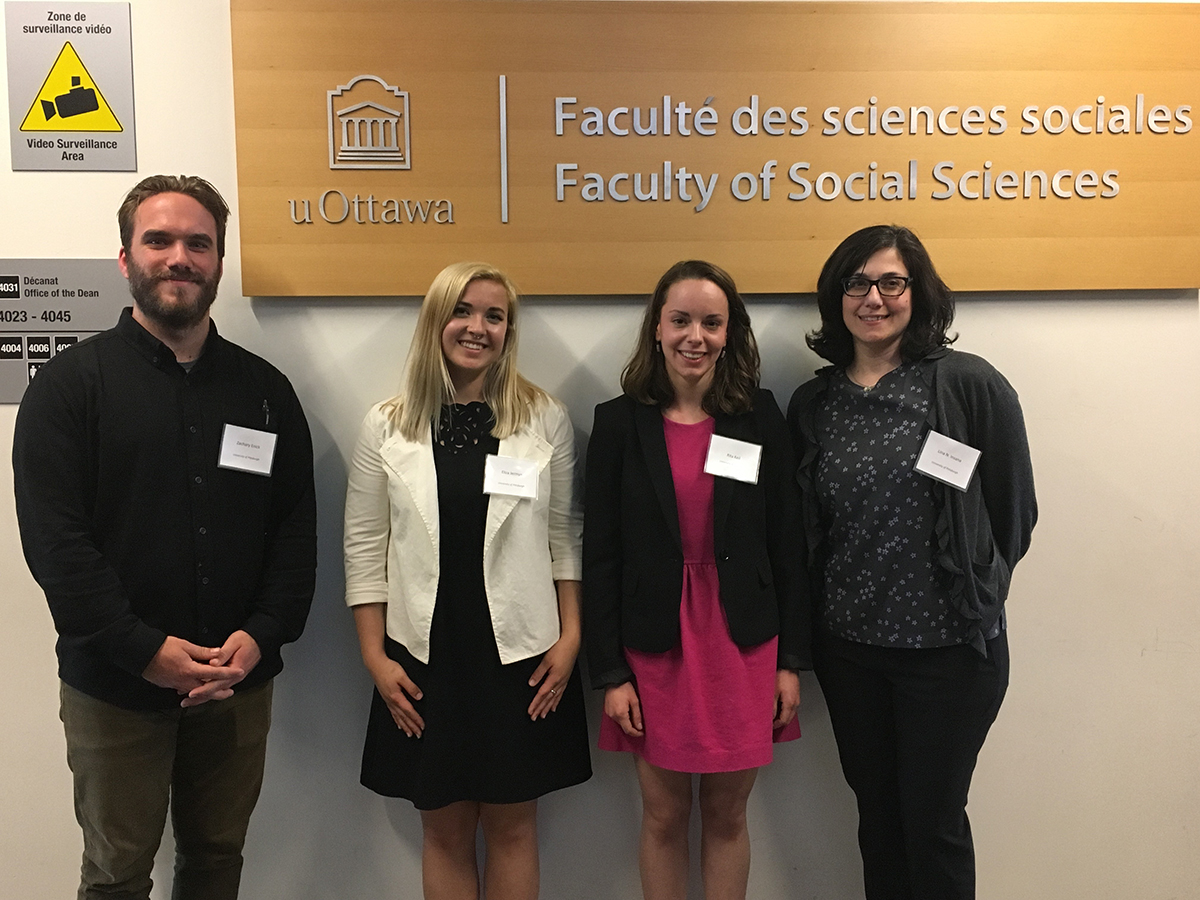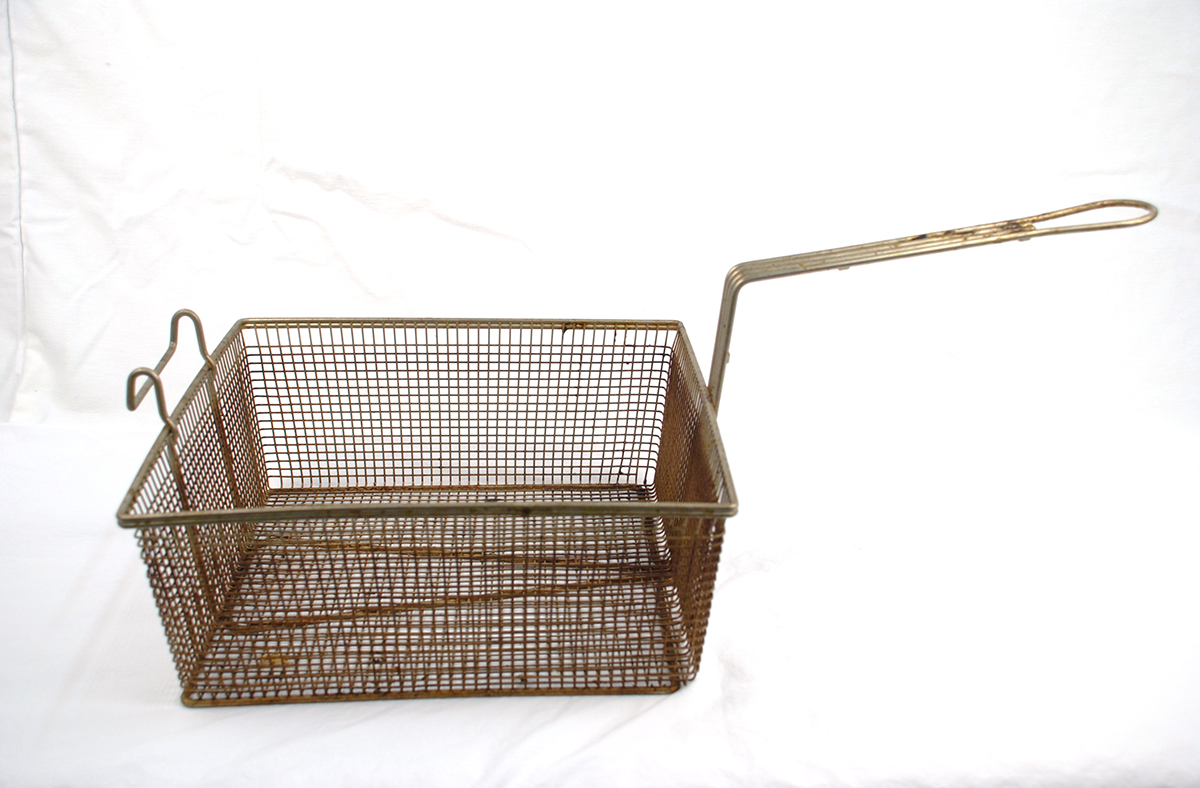
The History Center’s Italian American Program maintains working relationships with a number of partner organizations from Pittsburgh’s vibrant Italian American community. One of our long-standing partnerships is with the University of Pittsburgh’s French & Italian Department. Members of their staff participate in our Italian American Advisory Council (which guides the collection’s priorities), the department partners with us on public programming (such as our annual Italian Heritage Day and Rabbi Barbara Aiello’s lecture series), and their students complete internships within the Italian American Program for academic credit.
During the 2017-18 academic year, Professor Lina Insana, Chair of the University of Pittsburgh’s French and Italian Department and Chairman Emeritus of the Italian American Advisory Council, offered an Italian translation course utilizing documents from the Italian American Collection as content for transcription and translation. In planning for the course, Professor Insana visited the Detre Library & Archives to identify potential collections. The records of the Lega Toscana di Protezione, a mutual beneficial society for Tuscan immigrants and their families, were selected for their numerous pages of handwritten Italian text and Humanities-rich content. The collection, donated by Laura Baccelli Vondas-Vizzuto, is the most complete assortment of primary source records from an Italian lodge in our repository. It contains minutes, membership information, and financial records from the men’s organization and the Ladies’ Auxiliary.

The Tuscans of Pittsburgh are one of the best represented Italian American communities in the museum’s collection, thanks to the records of the Lega Toscana and a number of other pieces of material culture. Oral histories from restauranteurs John and Nino Barsotti and Bruno Tambellini shed a light on the social and business practices of the Lucchesi; photographic collections from Tambellini’s on Seventh Street, Tambellini’s in the North Hills, and Tambellini’s in Bridgeville illustrate three of the eleven Tambellini’s restaurants that once populated the Pittsburgh metro area; three-dimensional objects representing the Tuscan community in the collection are an espresso machine from Poli’s Restaurant, a fryer basket used to make fried zucchini from Tambellini’s Ristorante on Seventh Street, bottles from Roma Bottling Works, Prohibition-era bottles of Tambellini’s China Celli Elixir, and fiberglass murals of the Walls of Lucca and Puccini-inspired vignettes by artist Ivo Zini.
Equipped with digital copies of documents from the Lega Toscana records and supplemental resources, such as oral histories, images of artifacts and archives, an article on the Tuscans of Pittsburgh from the Western Pennsylvania History Magazine, and the locally produced documentary “A Tuscan Legacy,” Professor Insana’s fall students undertook the task of transcribing and translating 75 pages of the first volume of meeting minutes.
The student participants who contributed to the initial linguistic study of these documents are the following: Jenna Bernadino, Jordan Brewer, Jessica Cappellini, Zachary Enick, Maria Fenner, Eliza Jermyn, Rita Keil, Luke Langkamp, Kaleigh Mauroni, Archie Millar, Henry Novara, and Calvin Salazar. Of that group of students, Zachary, Eliza, Rita, and Archie decided to continue their own personal research projects on the Lega Toscana into the spring semester.
Below are statements from the four undergraduate student researchers who used the primary sources from the Lega Toscana records to complete a ground-breaking digital humanities project. View the results of their research online.

Archie Millar
I am a senior studying Italian Language and Geology. I chose to focus on the continuation of the transcription and translation of the Lega Toscana meeting minutes we had started in the 2017 fall semester, primarily those from the first volume which contains entries from 1919 through 1925. I employed commonly used transcription practices in order to complete and revise the transcription. I also returned to the translation work done the previous semester and standardized commonly used phrases and terminology in order to render the translation itself more uniform.
The purposefully elevated language used throughout the Lega Toscana minute books, motivated by a desire to break stereotypes and better the reputation of Italians within the city, prompted me to utilize a similar register within the translation. One difficulty with translating this sort of document is the lack of conventional sentence structures utilized. The nature of meeting minutes is to be concise, which led to the frequent use of incomplete sentences. I attempted to retain as much of this fragmentary nature of the document within my translation as possible, rectifying portions or adding bracketed insertions in places where clarification is need.
I hope this transcription and translation render the Lega Toscana documents more accessible to the non-Italian speaking public, not solely for their use in potential research, but for their value as a cultural resource, providing people the opportunity to be able to interact with and appreciate the intricacies and history of the Tuscan-American community in Pittsburgh.
Eliza Jermyn
I am a senior at the University of Pittsburgh studying Italian and Anthropology, and, after my 2017 graduation, I am remaining at the university to get my Master’s in Italian. This research project was a really great way for me to find a real-life application for both of my academic interests. As we worked with the Lega Toscana minute books last semester, I found myself becoming increasingly interested in who the members were that we had become so familiar with, due to their activity in the Lega. I dedicated my portion of the research to creating biographies of the most active members. I sought to understand how their activity in the Lega might have influenced and been influenced by their position in the greater Pittsburgh community.
Utilizing online databases like Ancestry, Newspapers, and Family Search, I answered questions about their status as immigrants, their occupations, their family lives, their social lives, and their politics. I had access to census records, World War I and II draft registrations, death certificates, and newspaper articles, spanning from 1890 to 1960. Once I had collected as much information as I could from these primary sources, I organized the data into ethnographic write-ups, starting with the individual’s date of immigration and their occupation, then focusing on their social activity in Pittsburgh, and ending with an explanation of their activity in the Lega Toscana. I found that among this small group of men, there was a lot of diversity in income, politics, and jobs. It seems that the organization worked to provide support for all Tuscan immigrants, regardless of their financial success or integration in the community of Pittsburgh.
Rita Keil
I’m a senior at the University of Pittsburgh studying Italian Language, Environmental Science, and Geographic Information Systems (GIS). My portion of the research project focused on where the members of the Lega Toscana lived and worked. I combined about 400 points of location data from the meeting minute books, the Women’s Auxiliary Membership Application forms, and Eliza’s biographical sources to create a database of names, places, dates, and notes. I geocoded the database in the software ArcMap to plot how Lega Toscana members moved through Allegheny County neighborhoods over time.
Early on, community members lived Downtown and in the Hill District. By the 1930s, most Lega members moved into South Hills neighborhoods like Beltzhoover, Mount Washington, and Beechview, although there remained a presence in Bluff. Residents lived in close-knit clusters of homes around areas like Climax Street and the Liberty Tunnel. Lega Toscana meetings were located centrally for most members in Beltzhoover. In the 1950s, the community continued to live mostly in the South Hills, but dispersed somewhat, with more residences appearing on the East and North sides of the city. I hope that this map will help visualize the spatial structure of the Tuscan-American community. This project can also serve as a model for work tracking other immigrant communities’ living and working patterns and the impact those communities have on urban areas.
Zachary Enick
I’m in my fourth year of five at the University of Pittsburgh. My portion of the research project focused primarily on social analysis of the minute books; that is to say, my primary research interest was how the minutes expressed interactions and relationships that individuals had with each other on an interpersonal basis and within the Lega Toscana as an organization. The methods I employed to explore my questions of inter-member and intra-organizational social dynamics were largely XML-based programming languages, with which I encoded annotations into the minutes that identified individuals throughout the volume and the contexts in which those individuals appeared.
The most reliable and interesting collections of data that I used to compile the statistics to support my research were found in two different and common occurrences within the meeting minutes: proposals and member lists. The former were sub-divided by the subject of the proposal itself, whether it dealt with organization or logistics of an event, revision of policy, or the handling of finances. The latter could have informed the reader of new or departing members, absent or presiding officers, or serving members of a committee. From these two pools of information, I assembled visualizations that described the different relationships the members had with each other and the pivotal role that specific individuals played within the Lega Toscana throughout the seven years that I analyzed. Additionally, I had the honor of assembling a publicly accessible website that will serve as an online host for my research and that of the other three members of the student research team.


Melissa E. Marinaro is the director of the Italian American Program at the Heinz History Center.
